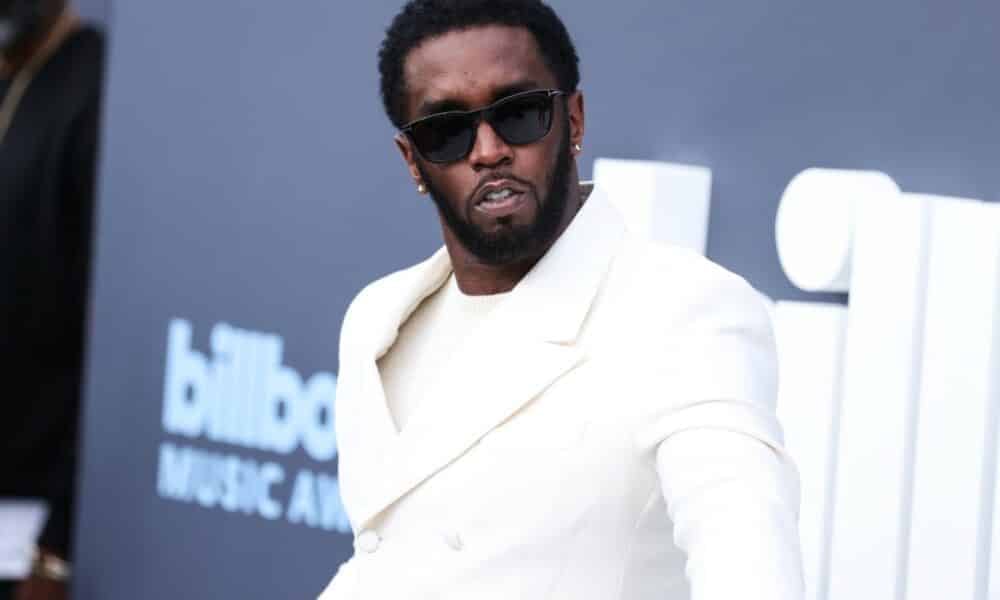Sean “Diddy” Combs, a towering figure in hip-hop and global culture, stepped into a Manhattan federal courtroom on May 5, 2025, marking the start of a high-stakes trial that could reshape his legacy. Charged with serious crimes including sex trafficking and racketeering, the 55-year-old music mogul faces a legal battle that may lead to life imprisonment. Jury selection began under tight security, with Judge Arun Subramanian ensuring juror anonymity due to the case’s intense public scrutiny. The accusations, spanning two decades, outline a disturbing pattern of alleged coercion and violence against women.
The trial, expected to last at least eight weeks, unfolds amid a firestorm of media attention. Combs, the founder of Bad Boy Records and a cultural icon, has been held without bail since his arrest in September 2024. Prosecutors are set to present compelling evidence, including a 2016 video showing Combs assaulting his former girlfriend, Cassie Ventura. The defense, however, maintains that the charges misrepresent consensual relationships.
- Timeline of Allegations: The charges cover 2004 to 2024, with additional counts added in April 2025.
- Key Witnesses: Four women, including Cassie Ventura, are expected to testify.
- Core Evidence: Videos, documents, and associate testimonies will be presented.
- Potential Penalties: Convictions could result in 15 years to life in prison.
Public Reactions Amplify Case Visibility
On the morning of May 5, the scene outside the Manhattan courthouse was chaotic. A small group of Combs’ supporters waved signs reading “Free Puff,” while others held banners demanding justice for the alleged victims. Reporters and onlookers crowded the entrance, with security personnel tightly controlling access. Social media, particularly the X platform, mirrors the divide: some users post memes about the allegations, while others call for harsh penalties.
The case gained momentum after Cassie Ventura’s 2023 civil lawsuit, which accused Combs of years of abuse. Though settled quickly, it triggered dozens of similar lawsuits, only a fraction of which are part of the criminal trial. Prosecutors strategically focused on four accusers with physical evidence, aiming to build a robust case for the jury.
Charges Outline a Network of Coercion
The allegations against Combs depict a system of calculated abuse. Prosecutors claim he leveraged his status as a music, fashion, and entertainment titan to lure women with promises of career advancement or financial support. These women were then allegedly coerced into participating in sexual events dubbed “Freak Offs,” often under the influence of drugs supplied by associates. The indictment describes these performances as meticulously orchestrated, with recordings used for blackmail.

The racketeering conspiracy charge is particularly severe. Prosecutors allege Combs ran a “criminal enterprise” through Combs Enterprises, involving employees who booked hotel rooms, procured drugs, and covered up incidents. The charges list crimes like kidnapping, arson, and physical assaults, with details of threats to expose compromising videos or withhold financial support.
- Crime Period: 2004 to 2024, with a focus on post-2008 incidents.
- Coercion Methods: Drugs, violence, and blackmail via recordings.
- Third-Party Involvement: Employees and security allegedly facilitated abuses.
- “Freak Offs” Defined: Prolonged sexual encounters, often non-consensual.
2016 Video as Central Evidence
A pivotal piece of evidence is a 2016 security video from a Los Angeles hotel, released by CNN, showing Combs chasing, kicking, and dragging Cassie Ventura in a hallway. Prosecutors allege the incident occurred during a “Freak Off,” while the defense argues it reflects a domestic dispute within an 11-year consensual relationship. Efforts to exclude the footage were denied by Judge Subramanian.
The defense also challenged the video’s integrity, claiming it was sped up by up to 50% and edited to appear more damaging. The judge, however, deemed it admissible with accompanying testimony to provide context. Prosecutors plan to use the footage to establish a pattern of violence, while the defense insists Combs’ relationship with Ventura was consensual and multifaceted.
Witnesses Bring Weight to Proceedings
Four women are set to testify against Combs, with Cassie Ventura being the most prominent. Her 2023 civil lawsuit, alleging a decade of abuse including rape, sparked the criminal investigation. The other three accusers, identified as “Victim-1,” “Victim-2,” and “Victim-3,” report similar experiences of coercion and violence. One, a former employee, claims she was forced into sexual acts as a condition of employment.
Prosecutors will also call up to 20 additional witnesses, including former associates and security personnel, to corroborate the allegations. These witnesses face risks, with some reporting fears of retaliation. The defense plans to challenge their credibility, suggesting some may have financial or personal motives for testifying.
- Cassie Ventura: Combs’ ex-girlfriend, pivotal after her 2023 lawsuit.
- Other Accusers: Three women alleging abuse from 2008 to 2024.
- Secondary Witnesses: Up to 20 individuals, including former staff.
- Reported Risks: Witnesses fear potential reprisals.
Jury Selection Under Intense Scrutiny
Jury selection, launched on May 5, is a meticulous process. Hundreds of New Yorkers received questionnaires in April, with about 300 evaluated daily. By the end of the first day, 19 candidates had passed initial screening. Judge Subramanian opted for an anonymous jury, a rare measure for high-risk cases, to shield jurors from threats or harassment.
Many candidates admitted familiarity with the case due to widespread media coverage, particularly the 2016 video. The defense sought to dismiss jurors exposed to reports, but the judge retained those who pledged impartiality. Prosecutors aim for jurors who grasp the gravity of sex trafficking charges, while the defense prefers those open to considering consensual relationships.
Legal Teams in the Spotlight
The prosecution is led by eight assistant U.S. attorneys, seven of them women, including Maurene Comey, daughter of former FBI Director James Comey. Comey brings experience from cases like Ghislaine Maxwell’s sex trafficking conviction. The team is known for its aggressive approach, relying on physical evidence and emotional testimonies to sway the jury.
The defense comprises seven attorneys, led by Marc Agnifilo, who also represents Luigi Mangione, accused of murder. Agnifilo specializes in high-profile cases, including NXIVM. Brian Steel, another defender, has experience with rappers, having represented Young Thug. Attorney Teny Geragos, focused on sexual misconduct cases, rounds out the team.
- Prosecution: Eight members, led by Maurene Comey.
- Defense: Seven attorneys, headed by Marc Agnifilo.
- Notable Experience: Cases like Maxwell and Young Thug.
- Defense Strategy: Emphasizing consent and witness credibility.
Combs’ Courtroom Appearance
At 55, Sean Combs appeared in court with gray hair and a beard, as prison rules prohibit dyeing. During pre-trial hearings, he wore yellow prison uniforms, but the judge allowed civilian clothing for the trial: up to five button-up shirts, five pairs of pants, five sweaters, and two pairs of laceless shoes. The change aims to prevent juror bias linked to prison attire.
In the first hearing, Combs showed signs of nervousness, requesting a bathroom break. He waved to family members in attendance and exchanged glances with his legal team, signaling trust in their strategy. Federal court rules ban photos or videos, with courtroom sketches as the sole visual record.
Civil Lawsuits Broaden Scrutiny
Since 2023, over 70 civil lawsuits have been filed against Combs, alleging sexual and physical abuse. Many plaintiffs claim they were drugged at Combs’ events and abused while incapacitated. While these lawsuits are not part of the criminal trial, they have heightened public and judicial pressure on the rapper.
Some civil cases mention other celebrities present at the events, but these claims lack evidence in the criminal proceedings. Prosecutors chose to focus on accusers with physical proof, like the 2016 video, or corroborated testimonies to streamline the case.
History of Controversies
Combs is no stranger to controversy. In 1991, a promotional event for a charity basketball game in Harlem led to nine deaths due to overcrowding, marking an early crisis in his career. In 1999, he faced assault charges against a music executive but avoided serious convictions. In 2015, he was accused of violence in a UCLA incident, again escaping significant repercussions.
These incidents, though unrelated to the trial, are cited by prosecutors to suggest a pattern of impulsive behavior. The defense counters that Combs has been unfairly targeted throughout his career due to his fame.
- 1991: Harlem event tragedy with nine deaths.
- 1999: Assault accusation against music executive.
- 2015: UCLA incident without conviction.
- Alleged Pattern: Prosecutors highlight a history of violence.
Heightened Security at the Courthouse
The case’s prominence necessitated robust security measures. The Manhattan federal courthouse operates under strict surveillance, with metal detectors and thorough screenings for all attendees. The anonymous jury, ordered by Judge Subramanian, reflects concerns about potential intimidation, though no specific threats have been reported.
Police monitor the courthouse surroundings, and press access is restricted. Protesters, both supporters and critics of Combs, are kept at a safe distance to prevent clashes. The ban on courtroom cameras reinforces control over visual coverage.
Social Media Sentiment
The X platform serves as a gauge of public sentiment. Posts range from support for Combs, with hashtags like #FreeDiddy, to harsh criticism, with users sharing clips of the 2016 video. Some speculate about other celebrities’ involvement, though without concrete evidence. The polarization underscores the case’s complexity, with discussions on race, power, and justice.
Mainstream media, including CNN and The New York Times, provide daily updates, but the trial’s lack of live broadcasts limits public access, increasing reliance on reports and sketches.

Sean “Diddy” Combs, a towering figure in hip-hop and global culture, stepped into a Manhattan federal courtroom on May 5, 2025, marking the start of a high-stakes trial that could reshape his legacy. Charged with serious crimes including sex trafficking and racketeering, the 55-year-old music mogul faces a legal battle that may lead to life imprisonment. Jury selection began under tight security, with Judge Arun Subramanian ensuring juror anonymity due to the case’s intense public scrutiny. The accusations, spanning two decades, outline a disturbing pattern of alleged coercion and violence against women.
The trial, expected to last at least eight weeks, unfolds amid a firestorm of media attention. Combs, the founder of Bad Boy Records and a cultural icon, has been held without bail since his arrest in September 2024. Prosecutors are set to present compelling evidence, including a 2016 video showing Combs assaulting his former girlfriend, Cassie Ventura. The defense, however, maintains that the charges misrepresent consensual relationships.
- Timeline of Allegations: The charges cover 2004 to 2024, with additional counts added in April 2025.
- Key Witnesses: Four women, including Cassie Ventura, are expected to testify.
- Core Evidence: Videos, documents, and associate testimonies will be presented.
- Potential Penalties: Convictions could result in 15 years to life in prison.
Public Reactions Amplify Case Visibility
On the morning of May 5, the scene outside the Manhattan courthouse was chaotic. A small group of Combs’ supporters waved signs reading “Free Puff,” while others held banners demanding justice for the alleged victims. Reporters and onlookers crowded the entrance, with security personnel tightly controlling access. Social media, particularly the X platform, mirrors the divide: some users post memes about the allegations, while others call for harsh penalties.
The case gained momentum after Cassie Ventura’s 2023 civil lawsuit, which accused Combs of years of abuse. Though settled quickly, it triggered dozens of similar lawsuits, only a fraction of which are part of the criminal trial. Prosecutors strategically focused on four accusers with physical evidence, aiming to build a robust case for the jury.
Charges Outline a Network of Coercion
The allegations against Combs depict a system of calculated abuse. Prosecutors claim he leveraged his status as a music, fashion, and entertainment titan to lure women with promises of career advancement or financial support. These women were then allegedly coerced into participating in sexual events dubbed “Freak Offs,” often under the influence of drugs supplied by associates. The indictment describes these performances as meticulously orchestrated, with recordings used for blackmail.

The racketeering conspiracy charge is particularly severe. Prosecutors allege Combs ran a “criminal enterprise” through Combs Enterprises, involving employees who booked hotel rooms, procured drugs, and covered up incidents. The charges list crimes like kidnapping, arson, and physical assaults, with details of threats to expose compromising videos or withhold financial support.
- Crime Period: 2004 to 2024, with a focus on post-2008 incidents.
- Coercion Methods: Drugs, violence, and blackmail via recordings.
- Third-Party Involvement: Employees and security allegedly facilitated abuses.
- “Freak Offs” Defined: Prolonged sexual encounters, often non-consensual.
2016 Video as Central Evidence
A pivotal piece of evidence is a 2016 security video from a Los Angeles hotel, released by CNN, showing Combs chasing, kicking, and dragging Cassie Ventura in a hallway. Prosecutors allege the incident occurred during a “Freak Off,” while the defense argues it reflects a domestic dispute within an 11-year consensual relationship. Efforts to exclude the footage were denied by Judge Subramanian.
The defense also challenged the video’s integrity, claiming it was sped up by up to 50% and edited to appear more damaging. The judge, however, deemed it admissible with accompanying testimony to provide context. Prosecutors plan to use the footage to establish a pattern of violence, while the defense insists Combs’ relationship with Ventura was consensual and multifaceted.
Witnesses Bring Weight to Proceedings
Four women are set to testify against Combs, with Cassie Ventura being the most prominent. Her 2023 civil lawsuit, alleging a decade of abuse including rape, sparked the criminal investigation. The other three accusers, identified as “Victim-1,” “Victim-2,” and “Victim-3,” report similar experiences of coercion and violence. One, a former employee, claims she was forced into sexual acts as a condition of employment.
Prosecutors will also call up to 20 additional witnesses, including former associates and security personnel, to corroborate the allegations. These witnesses face risks, with some reporting fears of retaliation. The defense plans to challenge their credibility, suggesting some may have financial or personal motives for testifying.
- Cassie Ventura: Combs’ ex-girlfriend, pivotal after her 2023 lawsuit.
- Other Accusers: Three women alleging abuse from 2008 to 2024.
- Secondary Witnesses: Up to 20 individuals, including former staff.
- Reported Risks: Witnesses fear potential reprisals.
Jury Selection Under Intense Scrutiny
Jury selection, launched on May 5, is a meticulous process. Hundreds of New Yorkers received questionnaires in April, with about 300 evaluated daily. By the end of the first day, 19 candidates had passed initial screening. Judge Subramanian opted for an anonymous jury, a rare measure for high-risk cases, to shield jurors from threats or harassment.
Many candidates admitted familiarity with the case due to widespread media coverage, particularly the 2016 video. The defense sought to dismiss jurors exposed to reports, but the judge retained those who pledged impartiality. Prosecutors aim for jurors who grasp the gravity of sex trafficking charges, while the defense prefers those open to considering consensual relationships.
Legal Teams in the Spotlight
The prosecution is led by eight assistant U.S. attorneys, seven of them women, including Maurene Comey, daughter of former FBI Director James Comey. Comey brings experience from cases like Ghislaine Maxwell’s sex trafficking conviction. The team is known for its aggressive approach, relying on physical evidence and emotional testimonies to sway the jury.
The defense comprises seven attorneys, led by Marc Agnifilo, who also represents Luigi Mangione, accused of murder. Agnifilo specializes in high-profile cases, including NXIVM. Brian Steel, another defender, has experience with rappers, having represented Young Thug. Attorney Teny Geragos, focused on sexual misconduct cases, rounds out the team.
- Prosecution: Eight members, led by Maurene Comey.
- Defense: Seven attorneys, headed by Marc Agnifilo.
- Notable Experience: Cases like Maxwell and Young Thug.
- Defense Strategy: Emphasizing consent and witness credibility.
Combs’ Courtroom Appearance
At 55, Sean Combs appeared in court with gray hair and a beard, as prison rules prohibit dyeing. During pre-trial hearings, he wore yellow prison uniforms, but the judge allowed civilian clothing for the trial: up to five button-up shirts, five pairs of pants, five sweaters, and two pairs of laceless shoes. The change aims to prevent juror bias linked to prison attire.
In the first hearing, Combs showed signs of nervousness, requesting a bathroom break. He waved to family members in attendance and exchanged glances with his legal team, signaling trust in their strategy. Federal court rules ban photos or videos, with courtroom sketches as the sole visual record.
Civil Lawsuits Broaden Scrutiny
Since 2023, over 70 civil lawsuits have been filed against Combs, alleging sexual and physical abuse. Many plaintiffs claim they were drugged at Combs’ events and abused while incapacitated. While these lawsuits are not part of the criminal trial, they have heightened public and judicial pressure on the rapper.
Some civil cases mention other celebrities present at the events, but these claims lack evidence in the criminal proceedings. Prosecutors chose to focus on accusers with physical proof, like the 2016 video, or corroborated testimonies to streamline the case.
History of Controversies
Combs is no stranger to controversy. In 1991, a promotional event for a charity basketball game in Harlem led to nine deaths due to overcrowding, marking an early crisis in his career. In 1999, he faced assault charges against a music executive but avoided serious convictions. In 2015, he was accused of violence in a UCLA incident, again escaping significant repercussions.
These incidents, though unrelated to the trial, are cited by prosecutors to suggest a pattern of impulsive behavior. The defense counters that Combs has been unfairly targeted throughout his career due to his fame.
- 1991: Harlem event tragedy with nine deaths.
- 1999: Assault accusation against music executive.
- 2015: UCLA incident without conviction.
- Alleged Pattern: Prosecutors highlight a history of violence.
Heightened Security at the Courthouse
The case’s prominence necessitated robust security measures. The Manhattan federal courthouse operates under strict surveillance, with metal detectors and thorough screenings for all attendees. The anonymous jury, ordered by Judge Subramanian, reflects concerns about potential intimidation, though no specific threats have been reported.
Police monitor the courthouse surroundings, and press access is restricted. Protesters, both supporters and critics of Combs, are kept at a safe distance to prevent clashes. The ban on courtroom cameras reinforces control over visual coverage.
Social Media Sentiment
The X platform serves as a gauge of public sentiment. Posts range from support for Combs, with hashtags like #FreeDiddy, to harsh criticism, with users sharing clips of the 2016 video. Some speculate about other celebrities’ involvement, though without concrete evidence. The polarization underscores the case’s complexity, with discussions on race, power, and justice.
Mainstream media, including CNN and The New York Times, provide daily updates, but the trial’s lack of live broadcasts limits public access, increasing reliance on reports and sketches.







